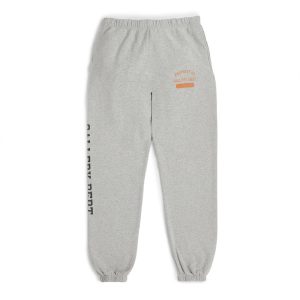Buying a conveyor isn’t always about starting from scratch. In many facilities, the bigger priority is improving what’s already there. That might mean replacing old equipment or adding to a basic line with new features. When speed, uptime, and labor savings matter, automation upgrades are where the value comes in.
For operations managers, engineers, or plant supervisors, it’s not just about finding any conveyor. It’s about making smart decisions that support long-term throughput. Here’s a breakdown of the top automation add-ons to look at when considering a conveyor for sale.
Motorized Rollers
One of the most effective ways to upgrade a gravity conveyor is by switching to motorized roller units, often called MDRs. These systems use low-voltage motors inside the rollers. This setup allows the line to move only when it’s needed. That means less energy waste, better control, and fewer breakdowns.
If you’re browsing a conveyor for sale and see MDR kits available, it’s worth a closer look. Motorized rollers are great for carton handling, e-commerce lines, and even packaging areas. They reduce wear on components because they run in zones, not across the whole line at once.
Sensors and Controls
Automation doesn’t always require a complete system overhaul. Adding photo-eye sensors or programmable logic controllers (PLCs) can give a basic line a big productivity boost. Sensors can trigger stops, starts, or divert products automatically.
If the conveyor for sale has wiring and mounting already in place, you can install sensors faster and get the line moving again with minimal downtime.
PLCs help customize how the conveyor behaves. You can program the system to change speeds, sync with other machines, or respond to different product types.
Zone Control
Automated zone control helps reduce jams and improve spacing between packages. Instead of the whole line running nonstop, zone-controlled conveyors activate only where product is present. That cuts power use and lowers wear on parts like belts and bearings.
If you’re looking at a conveyor for sale with zone control already built in, check how the zones are divided and how the logic is handled. You may be able to connect this system to other automation in your facility, such as sorters or labelers.
Accumulation Capabilities
Not all production lines move at the same speed. That’s why accumulation conveyors are often added to help manage product flow between machines. These conveyors let items build up in one area without damaging them.
Look for a conveyor that allows accumulation without constant pressure. This usually means zero-pressure or low-pressure designs. These are useful in areas where items wait to be picked, packed, or processed.
If you’re dealing with items that vary in size or weight, this feature becomes even more critical. Accumulation helps avoid pileups that can lead to shutdowns or damage.
Transfers and Diverts
Another key upgrade to consider is product transfer or divert mechanisms. These add-ons can move items off the main line to another direction or onto a different conveyor. They’re often used in sortation systems or multi-line packaging operations.
Standard transfer options include pop-up rollers or belt transfers. Diverts can be air-operated arms or wheels that push packages in a specific direction. If you’re planning to scale your system or handle more order types, these components help with routing and sorting.
Speed Control
Adding variable speed drives (VFDs) lets you adjust conveyor speed based on volume or task type. During low-volume hours, you can slow down the line to reduce noise and wear. During peak times, you can increase speed to hit higher throughput goals.
Speed control is especially useful in fulfillment centers or mixed SKU warehouses. If the conveyor for sale you’re reviewing includes VFDs or the correct motor specs to handle one, it’s a worthwhile upgrade.
Final Thoughts
Automation upgrades don’t have to mean starting from zero. When reviewing a conveyor for sale, pay close attention to which add-ons are already part of the system and which ones can be added with minimal downtime. Look for built-in capabilities like motorized rollers, zone logic, and control modules. Even simple upgrades like sensors or speed control can make a difference in the line’s performance.
The right upgrade choices depend on your layout, load type, and product flow. But with smart planning, a basic conveyor can quickly become a high-performing part of a modern production or fulfillment line.


